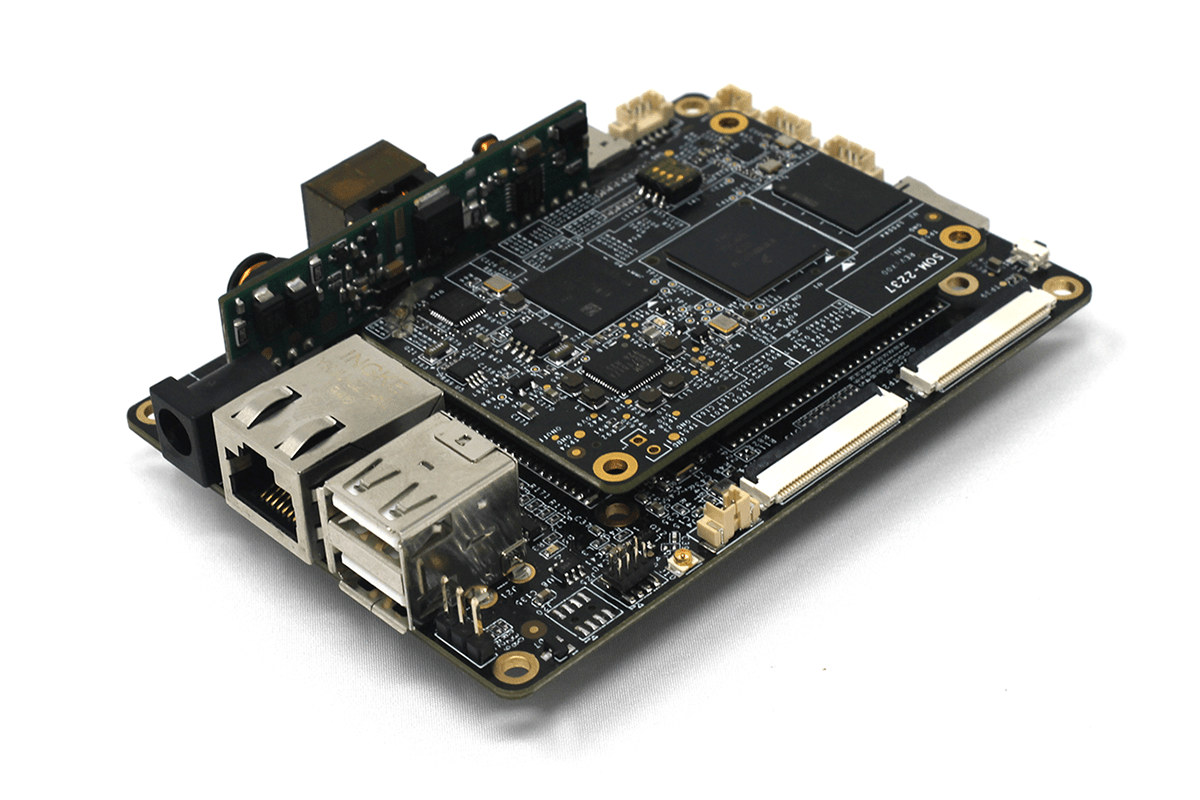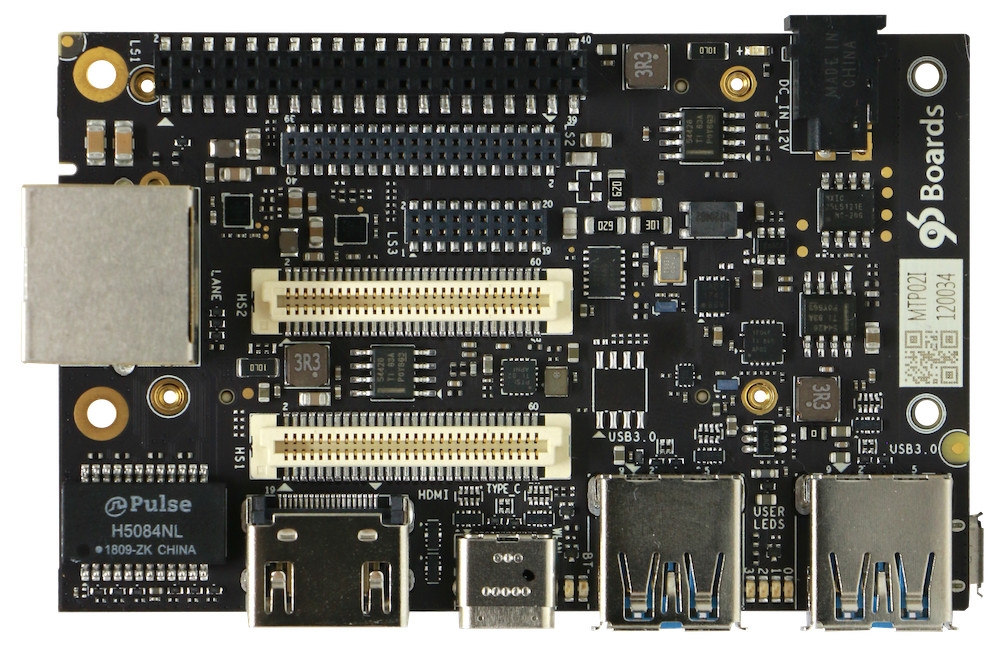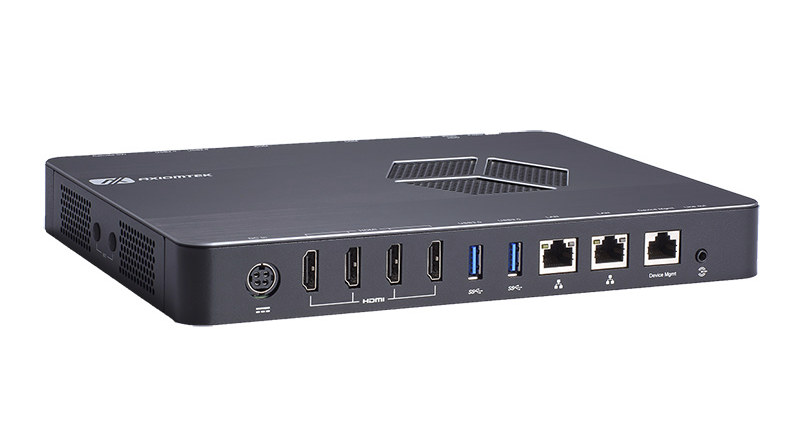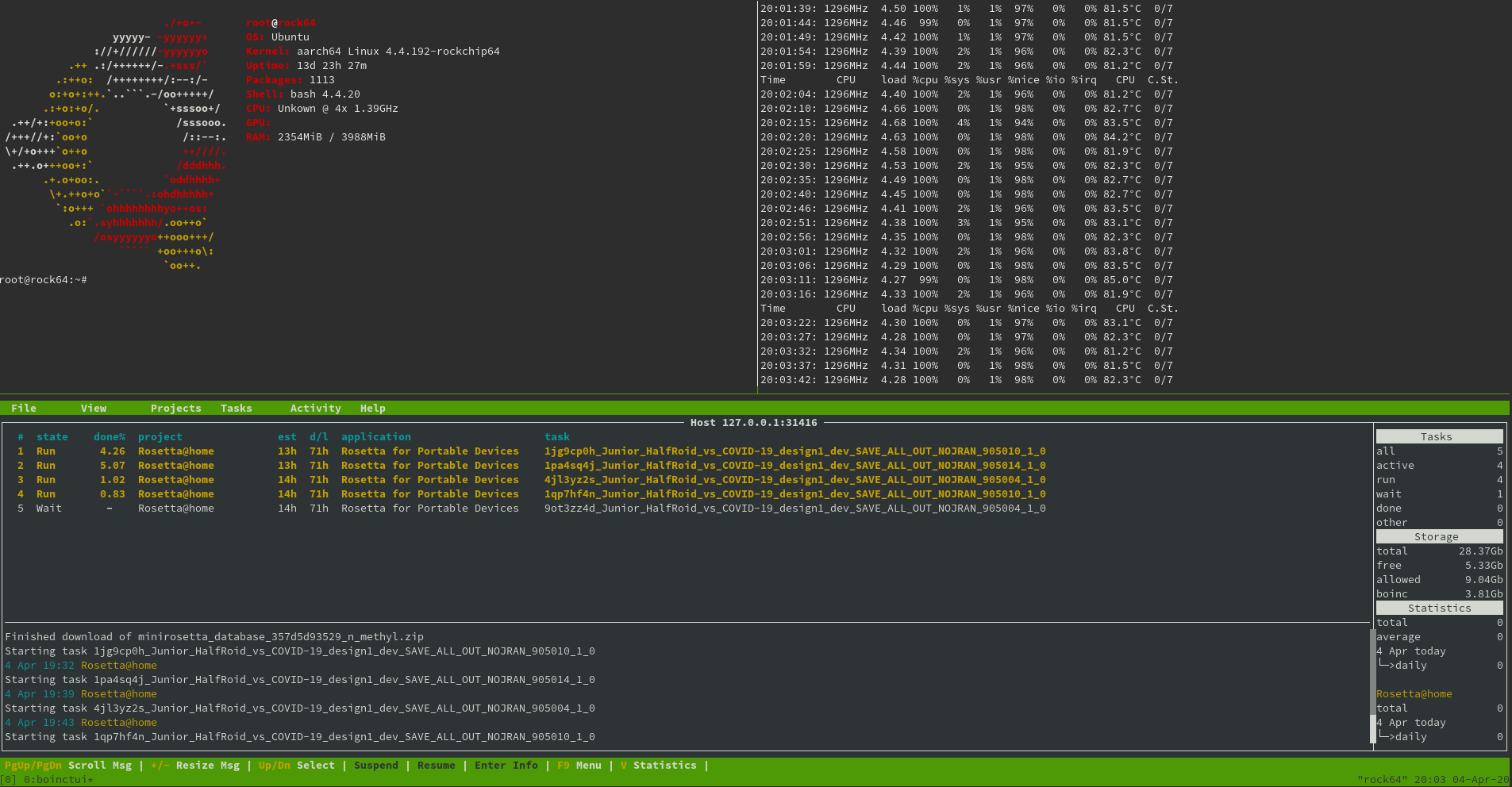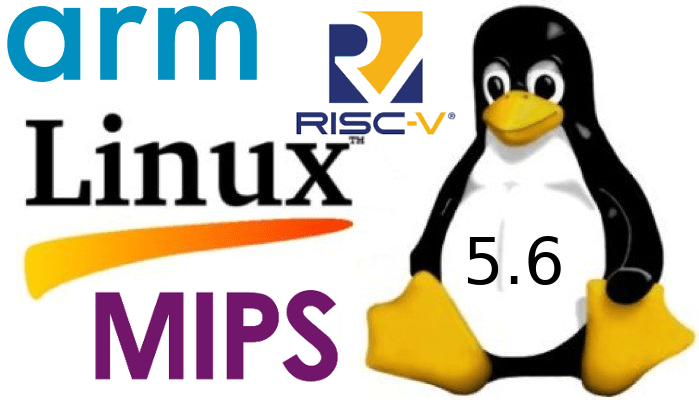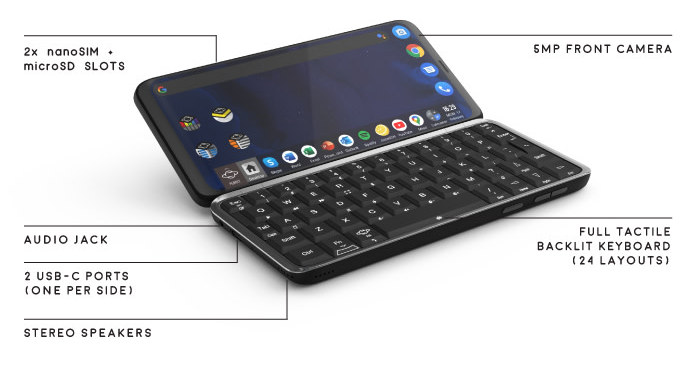We’ve covered several NXP i.MX 8M Mini SBC‘s since the announcement of the processor in 2018 as the first i.MX SoC manufactured with a 14nm process allowing for a higher CPU clock of 2.0 GHz compared to the 1.5 GHz frequency used with the original i.MX 8M processor. i.MX 8M Mini also removes some features (4K video playback, some video interfaces, …) in order to lower the cost of the processor. Companies are still releasing new i.MX 8M SBCs regularly, but we don’t always cover them all since many often do not offer much compared to the competition. But Estone Technology EMB-2237-AI Pico-ITX SBC has some unusual features and options including a Cirrus Logic audio DSP, as well as support for a PoE module and Google Coral M.2 AI accelerator module. EMB-2237-AI SBC is comprised of a system-on-module and baseboard with the following specifications: Estone SOM-2237 module SoC – […]
DragonBoard 845c Android (AOSP) Reference Board Supports Open Source Graphics, Mainline Kernel
Besides the obvious Google Pixel and Nexus devices supported by AOSP (Android Open Source Project), we previously covered some single board computers that were also officially supported by the project with Hikey and Hikey 960 Android reference boards. Linaro Consumer Group (LCG) has just written about Qualcomm Snapdragon 845 based Dragonboard 845c board. It has been now an official Android reference board for a few months now, and it is the first such board with an open-source graphics stack thanks to Freedreno graphics driver and mesa framework. Since no proprietary blobs are required, the board’s full functionality can also be upstreamed into the mainline kernel, and Linaro currently uses the board as a test target for validating the mainline kernel and stable updates. Here’s a reminder of the board’s hardware specifications: SoC – Qualcomm Snapdragon 845 with 8x custom 64-bit ARMv8 CPUs up to 2.8 GHz, Adreno 630 GPU with […]
4K Digital Signage Player Drives up to 4x 4K Displays with AMD Ryzen Embedded V1000 SoC
We’ve covered plenty of AMD Ryzen Embedded V1000 SBC‘s, as well as some mini PC‘s, but the processor’s multimedia capabilities make it an ideal candidate for advanced digital signage players capable of driving multiple 4K displays. Axiomtek leveraged those capabilities in DSP600-211 4K digital signage player that offers four HDMI ports driving up to four 4K displays, as well as dual Gigabit Ethernet. Axiomtek DSP600-211 4K digital signage specifications: SoC (one or the other) AMD Ryzen Embedded V1605B quad-core/octa-thread processor @ 2.0GHz / 3.6 GHz (Boost) with AMD Radeon Vega 8 Graphics; 12-25W TDP AMD Ryzen Embedded V1807B quad-core/octa-thread processor @ 3.35GHz / 3.8 GHz with AMD Radeon Vega 11 Graphics; 35-54W TDP System Memory – 2x DDR4-2400 SO-DIMM up to 16GB Storage – 1x M.2 Key M 2280 (SATA) and 1x M.2 Key M 2280 (NVMe) Video Output – 4x HDMI 2.0 ports up to 4K @ 60 Hz […]
Rosetta@Home Now Supports 64-bit Arm SBC’s and Servers in the Fight against COVID-19
Folding@Home and Rosetta@Home projects aim to perform biomedical research using the computing power of volunteers. Basically, you just need to install a program on your computer, and it will use idle computing power to perform complex calculations without slowing down your computer as long as you are not short in RAM. The projects are now working on COVID-19 to understand how SARS-CoV-2 protein is structured which could help find a cure. The programs have been available for Windows, Linux and Mac OS on 32-bit and 64-bit x86 targets for years, but very recently Rosetta@Home has been made available for 64-bit ARM targets so people can also run BOINC program on Arm Linux SBCs such as Raspberry Pi 4, NVIDIA Jetson Nano, or Rock64, or even powerful Arm servers to help with Rosetta@Home project’s COVID-19 research. As explained in an article on miniNodes, you’ll need a board with at least 2GB […]
Widora TINY200 Allwinner F1C200s ARM9 Development Board Supports DVP Camera, Up to 512MB SD NAND Flash
Widora TINY200 is a tiny ARM9 development board equipped with Allwinner F1C200s with a DVP camera interface compatible with OV2640 / 5640 sensor, an audio amplifier, and various storage options from a 16MB SPI flash to a 512MB SD NAND flash. I first heard about the processor when I wrote about Microchip SAM9X60 ARM9 SoC last month, and some people noted there were other fairly new ARM9 SoCs around such as Allwinner F1C200s that also includes 64MB RAM so you can run Linux without having to connect external memory chips. Widora TINY200 V2 specifications: SoC – Allwinner F1C200s ARM926EJS processor @ 400-600 MHz (Overclockable to 900 MHz) with 64MB DDR1 RAM Storage – 16MB SPI NOR flash or 128MB NAND flash and MicroSD card slot or 512MB SD NAND flash. Display I/F – 40-pin RGB FPC cable for resistive touch screens; additional 6-pin FPC cable for capacitive touch support Camera […]
This is what HoneyComb LX2K 16-core Arm Workstation Looks Like (Video)
Back in February 2019, while referring to Arm server, Linus Torvalds famously said: I can pretty much guarantee that as long as everybody does cross-development, the platform won’t be all that stable. Or successful. … If you develop on x86, then you’re going to want to deploy on x86, because you’ll be able to run what you test “at home” (and by “at home” I don’t mean literally in your home, but in your work environment). … Which in turn means that cloud providers will end up making more money from their x86 side, which means that they’ll prioritize it, and any ARM offerings will be secondary and probably relegated to the mindless dregs (maybe front-end, maybe just static html, that kind of stuff). SolidRun had already worked on products with NXP LX2160A 16-core Arm Cortex A72 processor and found out it could be a match to make a powerful […]
Linux 5.6 Release – Main Changes, Arm, MIPS & RISC-V Architectures
Linus Torvalds has just announced the release of Linux 5.6 on the Linux Kernel Mailing List: So I’ll admit to vacillating between doing this 5.6 release and doing another -rc. This has a bit more changes than I’d like, but they are mostly from davem’s networking fixes pulls, and David feels comfy with them. And I looked over the diff, and none of it looks scary. It’s just slightly more than I’d have preferred at this stage – not doesn’t really seem worth delaying a release over. So about half the diff from the final week is network driver fixlets, and some minor core networking fixes. Another 20% is tooling – mostly bpf and netfilter selftests (but also some perf work). The rest is “misc” – mostly random drivers (gpio, rdma, input) and DTS files. With a smattering of fixes elsewhere (a couple of afs fixes, some vm fixes, etc). […]
Astro Slide 5G Transformer Smartphone Comes with a Slide-out Keyboard, MediaTek Dimensity 1000 SoC (Crowdfunding)
Planet Computers has introduced several smartphones with physical keyboards over the last few years including Gemini PDA and Cosmo Communicator with the later recently received its promised Debian Linux images besides just running Android 9.0. The company is now back with the new model. Powered by a MediaTek Dimensity 1000 processor, Astro Slide 5G Transformer supports 5G connectivity and comes with a slide-out keyboard following on the steps of the company’s previous smartphones. Astro Slide 5G Transformer preliminary hardware specifications: SoC- MediaTek Dimensity 1000 (MT6889)octa-core processor with 4x Arm Cortex-A77 cores @ 2.6 GHz, 4x Arm Cortex-A55 CPU efficient cores @ 2.0 GHz, Arm Mali-G77 GPU, 4.5 TOPS APU 3.0 AI accelerator / NPU System Memory – At least 6GB LPDD4x RAM Storage – 128 GB flash, MicroSD card slot Display – 6.53″ touchscreen display with 2340×1080 resolution, scratch-resistant glass Camera – 48MP rear camera with flash, 5.0MP front-facing camera […]


